All this month, I’ve been observing “kaiju month” on the blog, writing about giant monsters in various forms, while at the same time catching up on movies I hadn’t seen yet. The movies show varying degrees of seriousness, ranging from the deadly grimness of the original Godzilla (and the dry wit of this year’s Shin Godzilla) to movies that are all about men in rubber suits waling on each other and stomping model cities to bits, with little regard to characterization or story logic. Whatever your view of the genre or which approach you favor, there’s no question that some of these monsters can be downright goofy. To prove it, here are ten movie monsters that inspire more laughter than awe.
A few ground rules: I’m thinking mainly of movies in which the giant monster is either the main character or central to the plot: that includes most Japanese kaiju eiga and their imitators, as well as many of the American monster movies of the 1950s and later. I’m excluding characters that are deliberately humorous or parodies (sorry, Queen Kong); it’s too easy, and anyway there’s nothing sillier than someone trying too hard to be taken seriously (although I’ve included at least one monster that walks the line between serious and parody–it’s a judgment call). Finally, I’m primarily looking at silly monsters: if the movie around the monster is ridiculous, but there’s nothing particularly funny or silly about the creature itself, that doesn’t fit my requirements for this list. (The reverse is also true: plenty of good movies have laughable creatures at their center, and just because I’ve included a movie here doesn’t mean it’s bad or that I don’t enjoy it. Sometimes the tone is clearly light-hearted, and sometimes the laughs stem from a severe miscalculation or a skimpy budget.)
I’m sure that you’ll think of some that I’ve overlooked, or have a different opinion about something I’ve included; please feel free to add your suggestions or counterpoints in the comments. I haven’t seen every monster movie ever made, and I’d be happy to discover something new to me!
Gamera
Now, don’t get me wrong: Gamera is terrific. I have great affection for Gamera. Years before Mystery Science Theater 3000 presented the terrapin terror to a new generation of fans, I was watching his films on Commander USA’s Groovy Movies (probably because they were cheaper to show than Godzilla movies). But there’s no question that a giant fire-breathing turtle who can turn himself into a flying saucer by shooting flames out of the leg-holes in his shell is, well, not exactly serious. In addition, the kid appeal that eventually overtook Toho’s Godzilla series was baked into rival studio Daiei’s Gamera right from the beginning, with Gamera being a “friend to all children” and an emphasis on comic brawling with a series of mostly interchangeable kaiju opponents. Eventually, the Shusuke Kaneko-led Gamera revival from the 1990s would prove that a goofy leading monster could be put into a serious context and yield good, even great results. However, some have argued that Shusuke and company were given free reign in making their trilogy in part because expectations were so low: who thought a serious Gamera movie would actually be good?
Giant Killer Rabbits
Let this stand in for all of the American “giant animals on the loose” movies that invaded screens from the 1950s to the 1970s. 1972’s Night of the Lepus follows the pattern of many other “eco-horror” pictures of the era, as a scientific experiment meant to curb out-of-control rabbit populations in the American West backfires, resulting in a stampede of vicious bunnies the size of trucks. Never mind that the film (and the novel it was based on) was inspired by real-life rabbit plagues, or that rabbits can be mean as hell. The domestic bunnies, filmed bounding across miniature sets, with slow motion and rumbling sound effects to give the impression of massive size, are just too cute to take seriously. If Night of the Lepus ever acknowledged how preposterous it was, it would just be another Attack of the Killer Tomatoes, a spoof about an unlikely part of the environment turning against humanity. But it’s the film’s utter solemnity and desperation to be taken seriously–including an incredible trailer that bends over backwards to avoid revealing what it’s really about–that make it a camp classic.
Gigan and Megalon
Godzilla fans can be a bit like Batman fans: for years, the public perception of both series was dominated by the corniest iterations: the campy 1966 Batman TV show and the wrestling-influenced Godzilla movies from the 1960s and ’70s. This perception can make fans defensive and apt to reject all but the grimmest, most “adult” portrayals of their heroes. Fortunately, that tide has begun to turn, with greater appreciation of both Batman ’66 and the “fun” Godzilla movies in recent years.
The Bebop and Rocksteady of the Godzilla canon, Gigan and Megalon were introduced as opponents of the Big G in a pair of films in 1972 and 1973 (both directed by Jun Fukuda, the man most responsible for the turn away from the darker tone favored by original Godzilla director Ishiro Honda). Gigan, as revealed in Godzilla vs. Gigan, is a cyborg from Nebula M Spacehunter; Megalon, in Godzilla vs. Megalon, is the insectoid protector deity of the Seatopians, a long-lost underground civilization. Gigan has curved hooks for hands and matching horns and mandibles, as well as a punk-looking Cyclops visor, and most bizarrely a deadly rotary sawblade embedded in his chest; it’s the definition of trying too hard to be edgy (no pun intended). Megalon has giant drills for hands and a single horn-like antenna, and moves about by burrowing and leaping through the air (like a cricket, I guess?). As mentioned, the Godzilla series had already been kid-friendly for years by the time Gigan and Megalon came along, and the saurian designs of previous kaiju were easily turned into toys, but Gigan and Megalon feel like they were designed as toys first and characters second. (On that note, check out Gigan in Godzilla: Final Wars, where he’s outfitted with interchangeable chainsaw hands.) While Gigan is presented in his movie as a scary threat, the monster who might finally defeat Godzilla (he doesn’t), in Godzilla vs. Megalon both monsters join together in a sort of tag team, giving Godzilla (and the robotic Jet Jaguar) “the business.” All that’s missing is the ropes around the wrestling ring.
Minilla and Gabara
Speaking of Godzilla, it’s unlikely that any character in the series has been more divisive than Minilla (sometimes rendered as “Minira” or “Minya”–don’t call him “Godzookie” unless you want some serious side-eye from G-fans). Introduced in 1967’s Son of Godzilla, the diminutive kaiju was the embodiment of the series’ turn to juvenilia. In his first film appearance, newly hatched from a giant egg, Minilla is disturbing rather than cute: “more-fetus-than-infant” in the words of G-scholar William Tsutsui, Minilla is the kaiju version of the Eraserhead baby. In later appearances, Minilla is an obvious stand-in for Godzilla’s child audiences, learning to control his powers and stand up for himself under the grudging guidance of his single father (some versions of Godzilla have suggested the creature reproduces asexually; in any case, the whereabouts of any other parent of Minilla are unknown). In 1969’s much-maligned All Monsters Attack, the metaphor is made literal as Godzilla, Minilla, and the other denizens of “Monster Island” are treated as daydreams of a young boy, Ichiro, who learns to stand up to a bully named Gabara, inspired by Minilla’s fight against a kaiju also named Gabara. The “son of Godzilla” was later revived as the more saurian “Godzilla Junior” in the 1990s, but it’s Minilla, smoke-ring breath and all, who is remembered, fondly or otherwise.
By the way, here’s Gabara, the “kaiju bully” from All Monsters Attack. For the one-off character, special effects wizard Eiji Tsuburaya and his crew came up with a suitably misfit creature, with a reptilian body, feline facial features, and a shock of red hair. No wonder he had such a bad disposition.
The Yeti
Specifically, the one in Yeti: Giant of the 20th Century, a 1977 Italian knock-off of King Kong. Frozen in a glacier for thousands of years until his body is discovered and thawed out in the northern tundra of Canada, this Yeti is a hominid covered with brown hair, made gigantic through very primitive special effects. Once thawed, the Yeti follows Kong’s trajectory en manqué, falling for the granddaughter of the tycoon financing the expedition and running amok in Toronto. What makes the Yeti, played by Mimmo Crao, so amusing is the emphasis on his romantic nature: even in scenes that don’t seem to call for it, the camera lingers on the Yeti’s bedroom eyes, luxurious, flowing mane, and erect nipples (yes, really), and the film spends almost as much time on the relationship between beast and beauty as Peter Jackson’s 2003 King Kong, in a much shorter running time.
Back when Johnny Weissmuller was playing Tarzan, MGM claimed that Tarzan’s iconic call was produced by combining the recorded calls of lions, apes, and elephants. It was pure hooey, of course, but the Italian Yeti appears to have actually done just that, as the Yeti’s sound effects are a mix of animal growls and roars spliced together. Combined with Sante Maria Romitelli’s stately, even majestic score, it makes for an atmospheric soundtrack appropriate for the film’s purely cinematic montages (the sequence of the Yeti carrying Antonella Interlenghi around Toronto, marveling at the skyscrapers, so foreign to his experience, is a favorite). I’m reminded of my friend Craig Stephen Tower’s observation that even the trashiest Italian film is a little bit arty, and even the artiest a little bit trashy. As shameless as this movie is (and it is shameless, hitting the trifecta of putting a woman, a child, and a dog in peril), there’s a lot to like about it, particularly its winning sincerity.
Antimatter Space Buzzard
“It doesn’t make sense. It’s just a bird, a big bird! Guns, cannons, rockets, it’s just a bird!”
“Sure, just a bird. Ten million dollars’ worth of radar can’t track it. Enough fire power to wipe out a regiment can’t even slow it down. Sure . . . just a bird.”
When I was a kid, The Giant Claw was on TV all the time. I guess the TV station had their own print or something, but along with Them! and The Blob, The Giant Claw was the old monster movie I saw more times than any other during childhood. I didn’t give it a lot of thought until recent years, when I noticed this once-forgotten B movie from 1957 gaining a new cult following. It’s a typical monster mystery film, beginning with sightings of a UFO and the unexplained disappearance of planes in the far North. (The combination of Arctic setting, military-civilian conflict, and aggressively hard-boiled dialogue give the impression of a low-budget reworking of Howard Hawks’ classic The Thing From Another World.) Once revealed, the threat is a giant (possibly extraterrestrial) bird with a long neck and googly eyes, “as big as a battleship” and protected by an “antimatter screen.”
Upon rewatching The Giant Claw, I was surprised to see several names from the serials I’ve watched in my Fates Worse Than Death series, including producer Sam Katzman and musical director Mischa Bakaleinikoff. It’s not hard to imagine this story padded out into serial length with the addition of a spy ring or a mine cave-in. By 1957 the serials were dead, replaced by television, but quickly-made thrillers like The Giant Claw took their place in theaters and drive-ins, providing excitement and spectacle without the entanglements of serialization. (The space buzzard still looks ridiculous, though.)
Daigoro
In 1972’s Daigoro vs. Goliath, Daigoro combines the childlike qualities of Minilla with the friendliness of Gamera. Resembling a bidepal hippopotamus with feline whiskers, Daigoro is the orphaned child of a Godzilla-like marauder (seen in flashback), raised on an island (complete with a giant outhouse) by a zookeeper and his staff. As the film begins, the Japanese government struggles to find room in its budget to keep feeding the beloved creature, and hoards of schoolchildren attempt to make up the difference by soliciting donations. An attempt is made to slow Daigoro’s growth with “Anti-Grow,” but when the “Great Stellar Monster” Goliath arrives via meteorite and begins a destructive rampage, Daigoro is called upon to defend his adopted home. The scenes of Daigoro’s training, including learning to roar and breathe fire, will look familiar to anyone who’s seen Son of Godzilla or All Monsters Attack (apparently this film began as a Godzilla concept, so perhaps this similarity isn’t so surprising). Daigoro skews toward a younger audience than even Godzilla vs. Megalon: it reminded me most of the live-action Disney films of the 1960s, and anticipates Miyazaki’s films (particularly My Neighbor Totoro) with its environmental message and big, cuddly monster hero. The tone is relentlessly wacky, with broad slapstick comedy leavening the cloying sentimentality (but so help me, I laughed).
Guilala aka Monster X
Guilala, star of the 1967 film The X From Outer Space, is perhaps the silliest monster at least ostensibly meant to be taken seriously. The film is a brisk mix of space-age bachelor pad sci-fi and traditional kaiju action, with the title “X” inadvertently brought back to earth as a spore on the tailfins of a rocket expedition. Once on earth, the mysterious substance quickly grows into a living beast, the giant monster named Guilala (or Girara), which goes on the rampage as it draws energy from power lines and reactors. Guilala’s design is a mixture of a reptilian body, a flat, beak-like head, and “deely-bopper” antennae; it’s been described as a “giant space chicken.” Even if the creature itself were more sober, the film that surrounds it is delightfully lightweight. The X From Outer Space was the Japanese studio Shochiku’s only venture into the kaiju genre, but Guilala made a comeback in 2008 as the star of Minoru Kawasaki’s spoof, Monster X Strikes Back: Attack the G8 Summit. In the film, a sort of Japanese version of Team America, Guilala’s return (including quite a bit of reused footage from the original X) is the subject of endless debate at a G8 summit, with satirical versions of each country’s leaders taking turns trying to stop the monster. Ultimately, Guilala faces off against a local protective deity, brought to life by the collective prayers of the people.
So, what have I missed? Let me know in the comments and I’ll check it out!





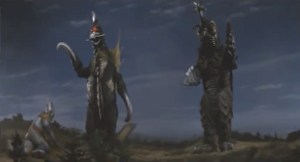



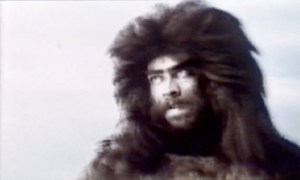


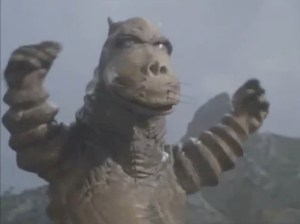
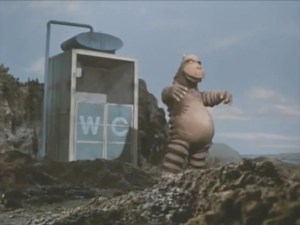
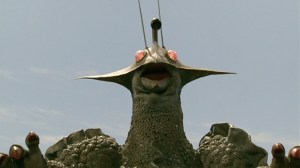
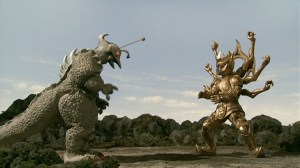
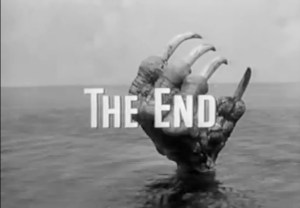
Somehow I just knew Yeti: Giant of the 20th Century was going to end up on your list! I saw that movie a loooooong time ago on television. It must have been in the mid-1980s. Even at the young age of eight or nine I thought it was really silly. In recent years, finding images from it on the internet, I end up snickering under my breath. One of these days I’d like to re-watch it for the sheer camp value.
Yes, Yeti is pretty ridiculous, although as I said it doesn’t feel like the cynical cash-in it obviously is: there’s an endearing sense of innocence to it. I didn’t have room to mention it in the article, but I also really like the fact that the dog has more character than many of the humans. If you ever wanted to see “Lassie Meets King Kong,” this is as close as you’ll get. Thanks for reading!
Posted a link to this on Facebook🙂
Thanks!
Re: “Night of the Lepus”. The source novel by Australian Russell Braddon (“The Year of the Angry Rabbit”) was a science fiction black comedy in the style of Kurt Vonnegut, Robert Sheckley or C. M. Kornbluth.
Which makes the producers’ belief that it could be turned into an ultra-serious horror movie even more baffling-even Hitchcock would have struggled to make giant rabbits scary.
Good to know, I haven’t read it. Thanks for reading!